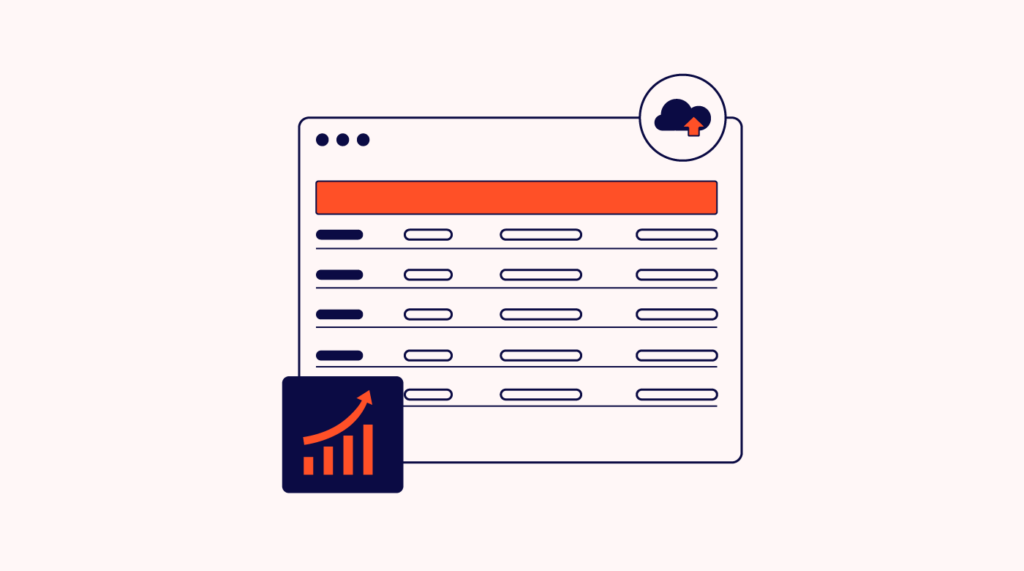Real-Time Tracking Magic: Know exactly what’s in stock and where it lives—across every warehouse and sales channel—so you never miss a beat or a sale.
Inventory Accuracy = Happier Customers: Prevent stockouts and overstocks by tracking inventory levels with precision and syncing them with sales and fulfillment.
Cost Control You Can Count On: Avoid deadstock, reduce manual errors, and use smarter forecasting to keep inventory lean and margins clean.
Smarter Supplier Relationships: Show up to the table with data. Predict needs, place timely orders, and become the partner suppliers prioritize.
Secure, Visible, and Audit-Ready: Protect your inventory data with role-based access while gaining transparency across your ops—compliance included.
Inasmuch as there are lots of moving pieces, successful ecommerce brands could be considered well-oiled machines. People, products, boxes, trucks—all moving to and fro to get delightful baubles to your customers.
As with any machine, it won't oil itself. It needs care and maintenance. In this case, the proper lubrication comes in the form of top-notch inventory management software.
If you don't have it, your operations become sluggish as the grinding sound of using pen and paper to record inventory levels slows you to a halt. It's brutal and easily avoidable.
As retail has evolved and a significant portion has moved online, so has the way we track inventory. As a business, you gotta do the same. Obviously, there are still many challenges in inventory management, but using prehistoric systems shouldn't be one of them.
Seriously.
To convince you fully (I see your skeptical gaze), let's dig into the benefits of using a modern system for inventory management. By the end of this, you'll get it.
What is Inventory Management Software?
Inventory management software is a digital tool that helps businesses track, control, and optimize inventory across multiple locations and sales channels.
It automates tasks like stock updates, purchase orders, and shipment tracking—keeping everything accurate, visible, and up to date in real time.
For ecommerce brands, that means fewer stockouts, no more over-ordering, and a clear picture of what’s where and when. It replaces manual spreadsheets with connected systems that sync with your sales platforms, POS, accounting tools, and even your suppliers.
The best inventory management software isn’t just about control—it’s about unlocking smarter operations, streamlining fulfillment, and freeing up cash flow by keeping inventory lean and agile.
If you want to scale without the chaos, this is the software you can’t ignore.
10 Benefits of Inventory Management Software
If you are still using pen and paper, or perhaps just using a subpar inventory system, you might be missing out on major benefits.
The below isn't to make you sad, if so, but rather to show you what you could have if you just made the switch. So, let's take a look at the advantages of using good inventory management software.
1. Enhanced accuracy and efficiency

Inventory accuracy is table stakes. Still, a shocking number of businesses are flying blind.
The average accuracy rate? Around 63%. That’s barely a passing grade—and it shows in lost sales, oversells, and the dreaded “Sorry, we’re out of stock” email.
Good inventory management software doesn’t just fix this. It eliminates the guesswork entirely. Stock counts update automatically across every warehouse, channel, and POS the moment something moves.
You’re no longer reconciling spreadsheets or manually adjusting for returns. The system does it all.
And when you know exactly what’s on hand, you can reorder with precision. No padding POs “just in case.” No pallets of product you’ll end up liquidating six months later.
This kind of inventory control makes just-in-time (JIT) not only possible, but practical.
The efficiency gains follow fast. Automated workflows reduce manual touches. No more double entries. No more chasing down phantom stock.
You can identify bottlenecks in your process and fix them before they turn into backlogs. Your team moves faster, and your customers get what they ordered—on time, every time.
There’s a financial kicker, too: businesses with optimized inventory accuracy and process control often unlock 2–3x faster cash-to-cash cycles.
That’s real money on the table. Less capital tied up in dusty stock. More liquidity to reinvest or scale.
If you’re serious about operational performance—and about not wasting time or cash—inventory accuracy is where the wins start.
2. Real-time inventory tracking
As I inferred before, real-time inventory tracking changes everything.
You can see where products are in your warehouses and how they're moving through the supply chain in real time. What a wonder of modern technology!
This eliminates human error from the equation. No data entry here, just automated inventory updates! So, from manufacturer to warehouse to shipping box to customer, you have an eye on what's going on with all those lovely products you sell.
Whether you operate from one warehouse and one sales channel to multiple of both, you have that sweet visibility you need to run your business better.
This very benefit is what enables massive brands like Amazon to track each little item they sell across the multitude of warehouses they have. This, plus robotics and a ton of employees, creates unmatched experiences for customers.
Similarly, Walmart uses these tools for real-time inventory management, empowering the organization to ensure its shelves are regularly stocked and reduce lost sales.
Maximize the benefits of inventory management—explore how a perpetual inventory approach provides continuous accuracy and efficiency.
3. Cost reduction
Human error, deadstock, overstock, stockouts, warehouse inefficiencies—these all cost you money. You want to keep that money.
That's where inventory management software comes in, proving its worth not just through boosting your revenue, but also by trimming those pesky costs.
It minimizes human error by automating data entry and inventory tracking, ensuring accuracy in stock levels and orders (as we discussed earlier).
Plus, with robust data analytics, you can anticipate which products will be in high demand during specific seasons. This foresight enables you to avoid unnecessary expenses and overstocking.
Advanced forecasting tools help optimize inventory levels, ensuring you have just the right amount of stock (JIT method)—reducing the costs associated with excess inventory and stockouts.
Inventory management software also streamlines warehouse operations. Efficient stock organization and retrieval processes reduce the time and labor costs associated with managing inventory, contributing further to cost savings.
Essentially, it acts as a safeguard against the various inefficiencies that can drain your resources, allowing you to retain more of your hard-earned revenue, which we love.
4. Improved supplier relationships
Suppliers don’t prioritize brands that fly by the seat of their pants.
They reward predictability—regular orders, clear timelines, no surprises. Inventory management software helps you become that kind of customer.
With real-time visibility into your inventory levels and order history, you’re not making gut calls. You’ve got hard data backing every PO, and that changes the dynamic with your vendors.
Here’s how software strengthens your supplier relationships:
- Clearer forecasts and demand signals. Know what to order and when, based on actual sales velocity—not assumptions.
- More consistent, proactive ordering. No more last-minute POs or panic buying that strains your supplier’s ops.
- Fewer fulfillment disruptions. Reliable inventory data means fewer order changes, cancellations, or costly expedited shipments.
- Negotiating leverage. With data in hand, you can confidently push for better pricing or terms—and suppliers are more likely to deliver.
- Support for vendor managed inventory (VMI). Some platforms let suppliers monitor your stock and handle replenishment, turning the relationship into a strategic partnership.
These aren’t soft benefits—they directly impact fulfillment speed, cost structure, and availability of high-demand SKUs.
In a market where supply chain volatility is a given, strong vendor relationships give you the edge.
The software doesn’t just help you place smarter orders. It helps you become the customer suppliers want to work with.
5. Data-driven decision making
Your inventory holds a goldmine of insight—if you can actually see it. Without centralized, accurate data, most businesses are stuck reacting to problems instead of staying ahead of them.
Inventory management software consolidates product, sales, and supply chain data into one source of truth.
You’re no longer cobbling together reports from spreadsheets and platforms that don’t talk to each other. You’re making decisions based on clean, live data that’s actually worth trusting.
Here’s how that powers smarter inventory decisions:
- Real-time visibility across channels and warehouses. See what’s in stock, where it is, and how fast it’s moving—all in one dashboard.
- Stronger forecasting and demand planning. Historical sales, seasonality, and trends inform automated reorder points and leaner stock levels.
- More accurate safety stock calculations. Avoid over-ordering while still covering demand surges, supplier delays, and shipping disruptions.
- Better resource allocation. When you know what’s driving turnover, you can optimize purchasing, warehousing, and even staffing.
- Cleaner reporting for leadership and planning. Pull insights fast for board decks, audits, or strategy sessions—without needing a data team.
Many teams that ditch manual processes for integrated inventory dashboards quickly uncover inefficiencies—like overstocked SKUs or lagging replenishment cycles—that were costing time and margin.
Once the data is centralized, smarter decisions follow.
6. Scalability and flexibility

Growing an ecommerce business takes a lot of care, support, and flexibility, and your inventory management system can be a key tool in making that happen. As your business grows and you expand into new markets, your inventory needs will change.
A 2023 consumer study found that 55% of products are out of stock more frequently. With these stock issues becoming the norm, you can give your business an edge by managing inventory better as you scale to ensure product availability.
Many inventory management tools come with automated features that offer the flexibility and scalability your company needs to adapt to changing demands.
Also, with the right software, you can easily add new products, warehouses, and sales channels, ensuring you can remain flexible without having to make costly upgrade investments.
7. Enhanced customer satisfaction
Happy customers are good business. They write positive reviews, come back to buy more, and tell their friends and family about your wonderful stuff. That sort of trust and credibility is priceless.
76% of consumers will stop buying from a brand after one bad experience, and having better inventory control means customers get their products when they want them.
Inventory management software is designed to make your brand shine in your customers’ eyes. Here's how:
- Increased accuracy means the right product gets delivered to the right place at the right time.
- Automation speeds up the process, getting orders out of the warehouse doors faster.
- Real-time updates keep your customers in the loop about when shipments leave your storage and when they’ll arrive at their doors.
When customers know exactly when to expect their products, it reduces their worries and saves you from having to answer a ton of questions. It’s a win-win—customers are happy and feel taken care of, and you get to build trust and credibility in your market.
8. Compliance and audit readiness
Keeping accurate and up-to-date inventory records, as we've discussed, is required for any serious business. Not only does it make you more money in various ways, these accurate records also protect your company from getting penalized or fined.
Inventory compliance audits are key to making sure your records are spot on.
Inventory management tools can help you regularly perform these audits, catching and fixing discrepancies before they become big problems.
This proactive approach keeps you compliant with regulations, properly represents the value of your inventory, and helps you avoid hefty fees from non-compliance, like higher insurance rates.
For example, a cannabis company in Ontario, Canada, recognized the importance of compliance and regulation in the cannabis industry.
They implemented a monthly compliance reporting tool for the Alcohol and Gaming Commission of Ontario (AGCO) to save time and improve workflow for month-end reporting. The company was able to meet cannabis regulatory requirements by automating the compliance reporting process.
9. Multiple warehouse coordination
If you strive to scale your brand, you'll someday have multiple warehouses to manage.
Big brands are usually the early adopters for inventory management tools for this very reason. This software is great for managing multiple warehouses and consolidating product info into one place.
If you have several warehouses, the inventory management tool you use can give you a better big-picture analysis to help with long-term decision-making.
You’ll get a birds-eye overview of your entire supply chain by tracking stock and its movement between warehouse locations.
Inventory management software can show you which warehouse has a particular product, how much it has, and its price.
So, when one warehouse runs low on inventory of a specific item, you can quickly process orders from another location. Some advanced tools even help you place orders while automatically updating the product count.
10. Data security

Inventory data is sensitive—and chaotic access is a liability.
From pricing and product volumes to supplier info and margins, the last thing you want is your team (or worse, outsiders) poking around where they shouldn’t.
Modern inventory management systems give you control.
You can assign role-based access, set approval workflows, and keep a clean audit trail of every change made. That’s not just about security—it’s how you maintain operational integrity at scale.
Here’s what smarter access and oversight actually look like:
- Role-based access control. Limit who can view or edit inventory data based on job function or location.
- Approval workflows and change logs. Ensure major edits are reviewed, and track who did what, when, and why.
- Data integrity across platforms. Prevent conflicting edits or duplicate entries by centralizing updates through one system.
- Compliance-friendly recordkeeping. Maintain audit-ready inventory histories for regulatory and financial reporting.
- Controlled visibility by channel or warehouse. Let regional managers see only their slice of the business, while execs get the big picture.
This level of oversight matters whether you’re managing five SKUs or five thousand.
It protects against internal errors, ensures compliance, and builds trust across your team. And when the next audit or insurance review rolls around, you won’t be scrambling to prove your numbers.
Good inventory software doesn’t just track your stock. It protects the data that drives your entire operation.
How to Choose the Best Inventory Management Software for Your Ecommerce Business
Choosing the right inventory management software is a high-leverage decision. Get it right, and your operations get faster, cleaner, and more profitable. Get it wrong, and you’ll be trapped in workflows that create more problems than they solve.
Here’s what to look for if you want a tool that won’t bottleneck your business six months down the line:
- Total cost of ownership. License fees are just the start. Consider onboarding time, training, customer support, and how long it’ll take to see ROI.
- Accurate inventory and real-time tracking. Your software should reflect exactly what’s in stock, where it is, and how it’s moving—across all your channels and warehouses. If it’s not updating in real time, it’s already behind.
- Forecasting and just-in-time support. Look for tools that help you predict demand, set smart reorder points, and manage seasonal swings without tying up capital in excess stock.
- Scalability and multi-location support. Whether you’re adding SKUs, warehouses, or new markets, the system should grow with you—not hold you back. Bonus points if it handles inventory transfers and channel-specific rules out of the box.
- Role-based access and visibility controls. You need clean data—and that means controlling who can see or change what. Features like approval workflows, audit logs, and regional visibility aren’t “enterprise extras”—they’re essentials.
- Seamless integrations. Your IMS should sync with your accounting software, ecommerce platform, ERP, and POS—because duplicate data entry is a productivity killer.
- Vendor management features. If you’re working closely with suppliers, look for tools that support vendor managed inventory (VMI), collaborative forecasting, or PO automation.
Our Top Inventory Management Software Picks
Of course, we also have opinions on the matter. A big part of what we do at The Retail Exec is find the best software for ecommerce brands, then tell the world what we think.
We base this on a variety of factors, benefits, and features. Your perfect option is likely in there, even if it isn't at the top. Take a look at our picks for best inventory management software.
And, here's a peek at the top ten shortlist from that in-depth guide:
Start Reaping The Benefits of a Great IMS
As a serious ecommerce brand, you need serious inventory management software. Anything less would be criminal. Plus, it would do you zero favors.
There are many benefits to be had from choosing well. There are many disadvantages from choosing poorly. So, choose well.
This is a step in the right direction. Once you know what the benefits are from choosing well, you can be tuned into the right things as you come to your final decision.
You're going to crush it once you have the right tools!
Stay ahead of the competition by subscribing to The Retail Exec newsletter, unlocking exclusive insights, and empowering your business for sustained success.




